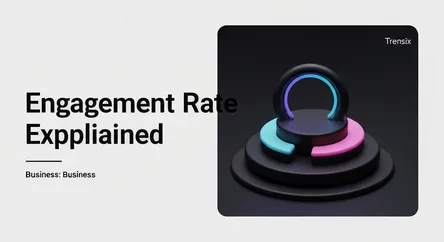Business
Engagement Rate Explained

Discover what Engagement Rate is and why this key metric is crucial for startups to measure audience interaction and build a loyal community.
What is it?
Engagement Rate is a metric used to measure the level of interaction an audience has with a piece of content or a marketing campaign. For startups, it's a vital indicator of how effectively they are connecting with their target market. It's typically calculated by taking the total number of interactions (such as likes, comments, shares, saves) on a post, dividing it by the number of followers or the post's total reach, and then multiplying by 100 to get a percentage. This metric provides a more nuanced view of performance than simply counting followers, as it focuses on the quality of audience connection rather than just its size.
Why is it trending?
Startups are prioritizing Engagement Rate because it's a direct reflection of brand loyalty and community health. In a digital landscape saturated with content, vanity metrics like follower count are becoming less meaningful. Instead, investors and marketers are looking for genuine connection and an active user base. Social media algorithms also favor content with higher engagement, rewarding it with greater organic reach. A high engagement rate signals that a startup's content is resonating, building a community that is more likely to convert into paying customers and brand advocates.
How does it affect people?
For startup founders and marketers, a low engagement rate can signal a need to pivot their content strategy, while a high rate validates their efforts and informs future campaigns. It directly impacts a startup's visibility and perceived authenticity. For consumers, a brand with high engagement often feels more trustworthy and community-focused. It indicates that the company is listening and responding to its audience, which can foster a stronger sense of connection and influence purchasing decisions. It transforms passive followers into an active, invested community.